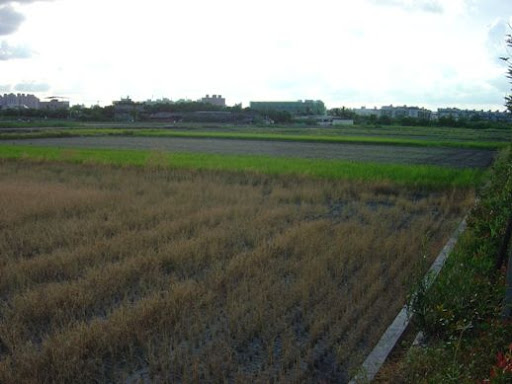
Looking north, toward Feng Dong Road
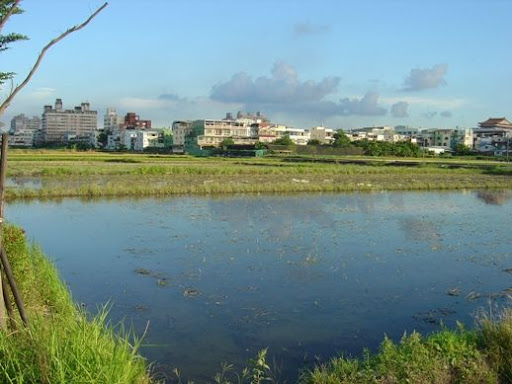
Looking south, toward Zhong Zheng Road
I took a handful of photos by holding my point-and-shoot (Sony DSC-P10) up to the eyepiece of my spotting scope (Pentax PF-80ED). Surprisingly, many of the photos turned out pretty well. I finally got a chance to sort through most of the photos and crop them. I posted some of them below.
One of the fields at the end of the paddies was completely flooded. There was a small stand of trees and shrubs lining the “pond” which served as a rookery for a number of herons and egrets.
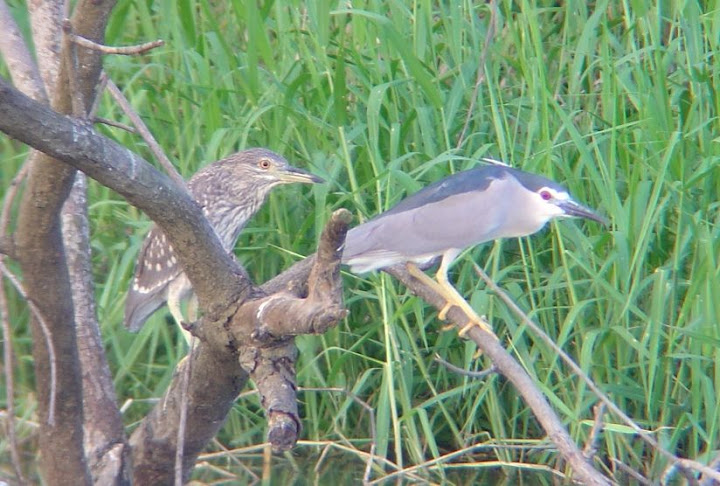
Black-crowned Night Herons
Black-crowned Night Herons were fairly abundant. The best time to see them is just before dusk. On a previous trip, I counted 177 individuals at the Old Railroad Bridge Park in Fongshan.
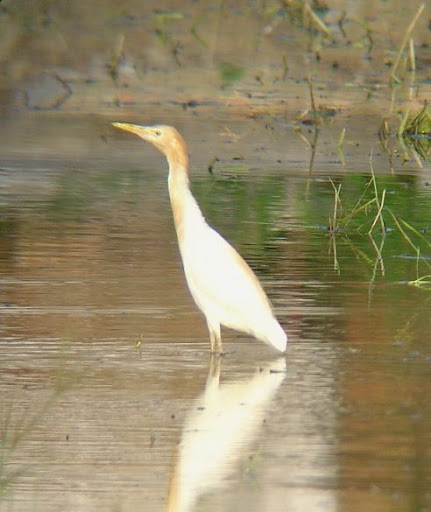
Cattle Egret
Cattle Egret were also abundant. Most were observed in the drained fields adjacent to the paddies. On one occasion, a farmer was plowing a drained field in preparation for sowing. I watched a small flock of about 15-20 Cattle Egret following the tractor, snatching up various grubs and small rodents unearthed by the plow.

Little Egret
Another abundant wader! At first glance, these guys look like our Snowy Egrets, except that the Little Egret has darker lores and longer head plumes.

Intermediate Egret
Intermediate Egrets are mainly overwintering birds, although some resident birds have been observed (rarely). I did not see these birds when I first got to Taiwan in June. They started to show up early in August, around the same time as the early migrating shorebirds.
Rice is planted three times a year in Taiwan. When I first arrived in Taiwan, there were in the midst of harvesting the most recent crop. For a few weeks following harvest, the paddies were more like mudflats or shallow pools following a rain storm. This was a prime habitat for a variety of rails and waders.
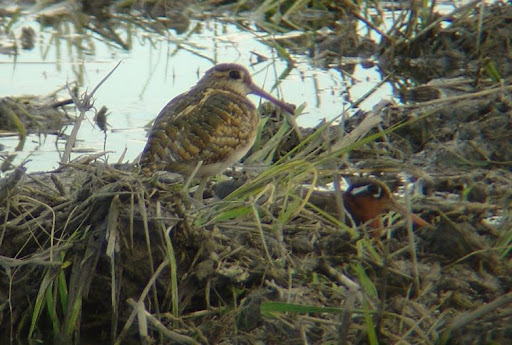
Greater Painted Snipe - pair
The Greater Painted Snipe inhabit heavily vegetated wet fields and grassy marshes. Despite their name, they are not true snipe. Actually, they are more closely related to jacanas. Like jacanas (and phalarope), Painted-Snipe are polyandrous and exhibit sex role reversal. Females fight each other for territory and court males. The nest is built by the male, generally on marshy ground. After laying a clutch, the female leaves the male to incubate the eggs and rear the young. She seeks another mate.
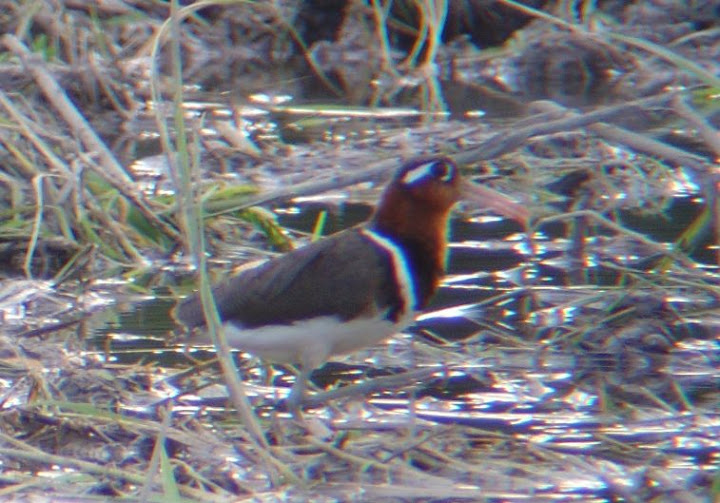
Greater Painted Snipe (female)
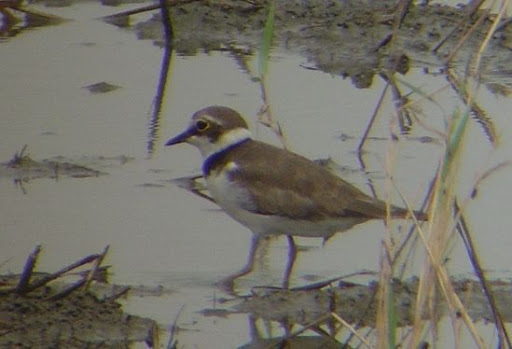
Little Ringed Plover
Taiwan's smallest plover. The Little Ringed Plover is primarily an overwintering bird, but resident populations are present in the southern part of the island. The plover has a fairly interesting feeding habit. As they walk along a mudflat, they occasionally tap their feet on the ground, presumably to create a disturbance and stir their prey.
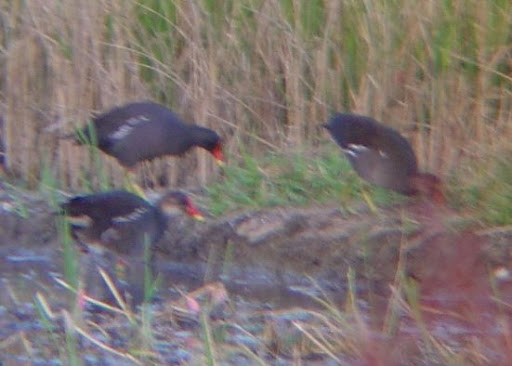
Common Moorhen
Local Taiwanese refer to moorhens as tsui gi (水鸡) - meaning "water chicken". I can not vouch for the taste. The moorhen are a common year-round resident, and are by far the most abundant rail on the island.
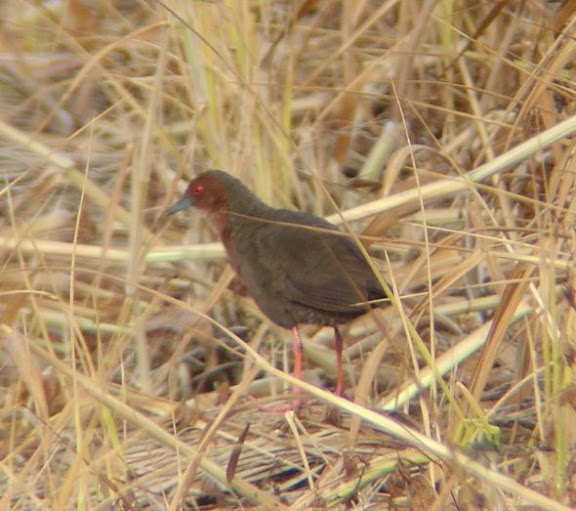
Ruddy-breasted Crake
Ruddy-breasted Crake are widely distributed on Taiwan; however, they can be difficult to see. They are very vigilant and wary. I was able to observe on only after playing a recording of its call and drawing it out onto the edge of a reed field. The moorhens in the area were very aggressive, driving the crake back into the reeds.
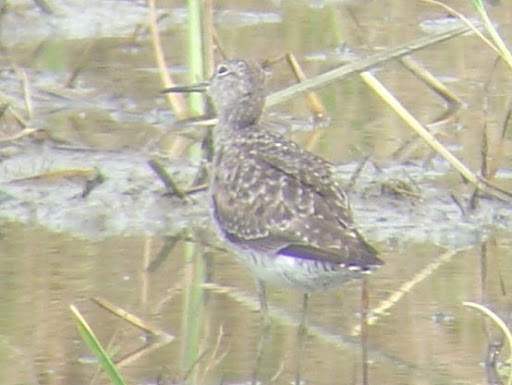
Wood Sandpiper
Common passage migrants in Taiwan. At first glance, they appear similar to our Yellow-legs. The Wood Sandpipers frequently bob their tails while feeding, in a manner reminiscent of a Common Sandpiper.
There were also a variety of swallows and martins flying around above the rice paddies. Some of the fields adjacent to the paddies were overgrown, attracting grassland birds.
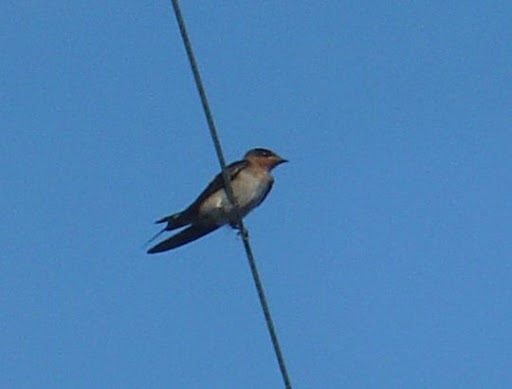
Pacific Swallow
The Pacific Swallow is broadly distributed throughout Taiwan. It is similar to our Barn Swallow (which is also present in Taiwan), except that he Pac Swallows lacks both a long forked tail and the black band on the lower throat.
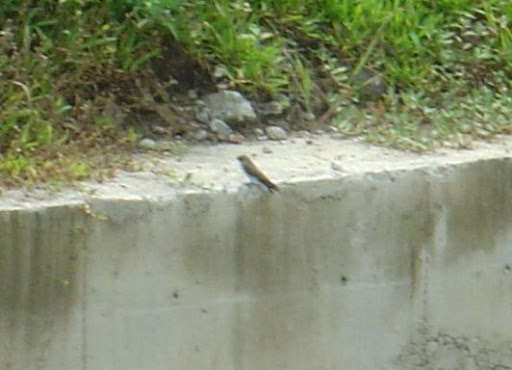
Plain Martin
Plain Martins are common residents of the lowland plains, particularly near water. They nest primarily on riverbanks and eroded edges of fish pond.
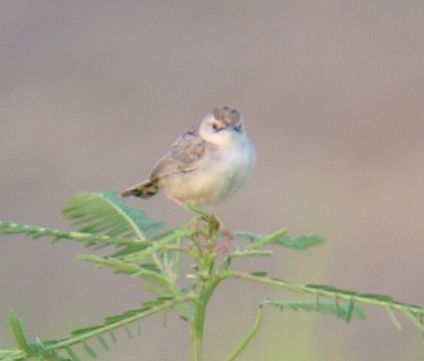
Zitting Cisticola
Cisticola were broadly distributed among lowland grassy plains, rice paddies and grassy scrubland. They are incessantly active. They have an interesting flight display where they fly around a territory in a high undulating flight path, chattering and singing as they go. Suddenly, they make a dive into the scrub. It was quite a spectacle.
Overall, I observed 32 species in and around the rice paddies. Unfortunately, there were some birds I was unable to photograph. Most notable were the Common Kingfisher and the Cinnamon Bittern. The Kingfishers were just too fast. My first sighting was somewhat serendipitous. I was walking the paddies in the late afternoon, during intermittent rain. Suddenly, two iridescent blue streaks shot down the grey water canal between the paddies. I jumped up on the retaining wall to see what just flew by. Couldn't see anything. A few minutes later, the birds flew back up the opposite way. One stopped and perched on the retaining wall on the other side of the canal. It only stayed for a few moments before flying off. The Cinnamon Bitterns were observed several times. Each time I saw one, it was a bird that flushed, flew about 50 yards or so, and then settled down inconspicuously in tall reeds.



No comments:
Post a Comment